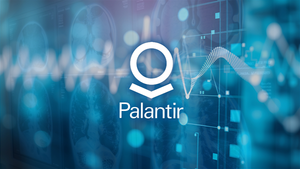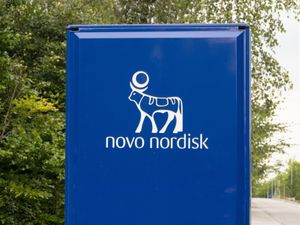
As the relentless march of artificial intelligence continues to reshape industries and daily life, the very foundation upon which these intelligent systems are built—their hardware—is undergoing a profound transformation. The current generation of silicon-based semiconductors, while powerful, is rapidly approaching fundamental physical limits, prompting a global race to develop revolutionary chip architectures. This impending shift heralds the dawn of a new era in AI hardware, promising unprecedented leaps in processing speed, energy efficiency, and capabilities that will unlock AI applications previously confined to science fiction.
The immediate significance of this evolution cannot be overstated. With large language models (LLMs) and complex AI algorithms demanding exponentially more computational power and consuming vast amounts of energy, the imperative for more efficient and powerful hardware has become critical. The innovations emerging from research labs and industry leaders today are not merely incremental improvements but represent foundational changes in how computation is performed, moving beyond the traditional von Neumann architecture to embrace principles inspired by the human brain, light, and quantum mechanics.
Architecting Intelligence: The Technical Revolution Underway
The future of AI hardware is a mosaic of groundbreaking technologies, each offering unique advantages over the conventional GPU (NASDAQ: NVDA) and TPU (NASDAQ: GOOGL) architectures that currently dominate the AI landscape. These next-generation approaches aim to dismantle the "memory wall" – the bottleneck created by the constant data transfer between processing units and memory – and usher in an age of hyper-efficient AI.
Post-Silicon Technologies are at the forefront of extending Moore's Law beyond its traditional limits. Researchers are actively exploring 2D materials like graphene and molybdenum disulfide (MoS₂), which offer ultrathin structures, superior electrostatic control, and high carrier mobility, potentially outperforming silicon's projected capabilities for decades to come. Ferroelectric materials are poised to revolutionize memory, enabling ultra-low power devices essential for both traditional and neuromorphic computing, with breakthroughs combining ferroelectric capacitors with memristors for efficient AI training and inference. Furthermore, 3D Chip Stacking (3D ICs) vertically integrates multiple semiconductor dies, drastically increasing compute density and reducing latency and power consumption through shorter interconnects. Silicon Photonics is another crucial transitional technology, leveraging light-based data transmission within chips to enhance speed and reduce energy use, already seeing integration in products from companies like Intel (NASDAQ: INTC) to address data movement bottlenecks in AI data centers. These innovations collectively provide pathways to higher performance and greater energy efficiency, critical for scaling increasingly complex AI models.
Neuromorphic Computing represents a radical departure, mimicking the brain's structure by integrating memory and processing. Chips like Intel's Loihi and Hala Point, and IBM's (NYSE: IBM) TrueNorth and NorthPole, are designed for parallel, event-driven processing using Spiking Neural Networks (SNNs). This approach promises energy efficiency gains of up to 1000x for specific AI inference tasks compared to traditional GPUs, making it ideal for real-time AI in robotics and autonomous systems. Its on-chip learning and adaptation capabilities further distinguish it from current architectures, which typically require external training.
Optical Computing harnesses photons instead of electrons, offering the potential for significantly faster and more energy-efficient computations. By encoding data onto light beams, optical processors can perform complex matrix multiplications, crucial for deep learning, at unparalleled speeds. While all-optical computers are still nascent, hybrid opto-electronic systems, facilitated by silicon photonics, are already demonstrating their value. The minimal heat generation and inherent parallelism of light-based systems address fundamental limitations of electronic systems, with the first optical processor shipments for custom systems anticipated around 2027/2028.
Quantum Computing, though still in its early stages, holds the promise of revolutionizing AI by leveraging superposition and entanglement. Qubits, unlike classical bits, can exist in multiple states simultaneously, enabling vastly more complex computations. This could dramatically accelerate combinatorial optimization, complex pattern recognition, and massive data processing, leading to breakthroughs in drug discovery, materials science, and advanced natural language processing. While widespread commercial adoption of quantum AI is still a decade away, its potential to tackle problems intractable for classical computers is immense, likely leading to hybrid computing models.
Finally, In-Memory Computing (IMC) directly addresses the memory wall by performing computations within or very close to where data is stored, minimizing energy-intensive data transfers. Digital in-memory architectures can deliver 1-100 TOPS/W, representing 100 to 1000 times better energy efficiency than traditional CPUs, and have shown speedups up to 200x for transformer and LLM acceleration compared to NVIDIA GPUs. This technology is particularly promising for edge AI and large language models, where rapid and efficient data processing is paramount.
Reshaping the AI Industry: Corporate Battlegrounds and New Frontiers
The emergence of these advanced AI hardware architectures is poised to dramatically reshape the competitive landscape for AI companies, tech giants, and nimble startups alike. Companies investing heavily in these next-generation technologies stand to gain significant strategic advantages, while others may face disruption if they fail to adapt.
Tech giants like Intel (NASDAQ: INTC) and IBM (NYSE: IBM) are already deeply entrenched in the development of neuromorphic and advanced packaging solutions, aiming to diversify their AI hardware portfolios beyond traditional CPUs. Intel, with its Loihi platform and advancements in silicon photonics, is positioning itself as a leader in energy-efficient AI at the edge and in data centers. IBM continues to push the boundaries of quantum computing and neuromorphic research with projects like NorthPole. NVIDIA (NASDAQ: NVDA), the current powerhouse in AI accelerators, is not standing still; while its GPUs remain dominant, it is actively exploring new architectures and potentially acquiring startups in emerging hardware spaces to maintain its competitive edge. Its significant investments in software ecosystems like CUDA also provide a strong moat, but the shift to fundamentally different hardware could challenge this dominance if new paradigms emerge that are incompatible.
Startups are flourishing in this nascent field, often specializing in a single groundbreaking technology. Companies like Lightmatter and Longevity are developing optical processors designed specifically for AI workloads, promising to outpace electronic counterparts in speed and efficiency for certain tasks. Other startups are focusing on specialized in-memory computing solutions, offering purpose-built chips that could drastically reduce the power consumption and latency for specific AI models, particularly at the edge. These smaller, agile players could disrupt existing markets by offering highly specialized, performance-optimized solutions that current general-purpose AI accelerators cannot match.
The competitive implications are profound. Companies that successfully commercialize these new architectures will capture significant market share in the rapidly expanding AI hardware market. This could lead to a fragmentation of the AI accelerator market, moving away from a few dominant general-purpose solutions towards a more diverse ecosystem of specialized hardware tailored for different AI workloads (e.g., neuromorphic for real-time edge inference, optical for high-throughput training, quantum for optimization problems). Existing products and services, particularly those heavily reliant on current silicon architectures, may face pressure to adapt or risk becoming less competitive in terms of performance per watt and overall cost-efficiency. Strategic partnerships between hardware innovators and AI software developers will become crucial for successful market penetration, as the unique programming models of neuromorphic and quantum systems require specialized software stacks.
The Wider Significance: A New Horizon for AI
The evolution of AI hardware beyond current semiconductors is not merely a technical upgrade; it represents a pivotal moment in the broader AI landscape, promising to unlock capabilities that were previously unattainable. This shift will profoundly impact how AI is developed, deployed, and integrated into society.
The drive for greater energy efficiency is a central theme. As AI models grow in complexity and size, their carbon footprint becomes a significant concern. Next-generation hardware, particularly neuromorphic and in-memory computing, promises orders of magnitude improvements in power consumption, making AI more sustainable and enabling its widespread deployment in energy-constrained environments like mobile devices, IoT sensors, and remote autonomous systems. This aligns with broader trends towards green computing and responsible AI development.
Furthermore, these advancements will fuel the development of increasingly sophisticated AI. Faster and more efficient hardware means larger, more complex models can be trained and deployed, leading to breakthroughs in areas such as personalized medicine, climate modeling, advanced materials discovery, and truly intelligent robotics. The ability to perform real-time, low-latency AI processing at the edge will enable autonomous systems to make decisions instantaneously, enhancing safety and responsiveness in critical applications like self-driving cars and industrial automation.
However, this technological leap also brings potential concerns. The development of highly specialized hardware architectures could lead to increased complexity in the AI development pipeline, requiring new programming paradigms and a specialized workforce. The "talent scarcity" in quantum computing, for instance, highlights the challenges in adopting these advanced technologies. There are also ethical considerations surrounding the increased autonomy and capability of AI systems powered by such hardware. The speed and efficiency could enable AI to operate in ways that are harder for humans to monitor or control, necessitating robust safety protocols and ethical guidelines.
Comparing this to previous AI milestones, the current hardware revolution is reminiscent of the transition from CPU-only computing to GPU-accelerated AI. Just as GPUs transformed deep learning from an academic curiosity into a mainstream technology, these new architectures have the potential to spark another explosion of innovation, pushing AI into domains previously considered computationally infeasible. It marks a shift from simply optimizing existing architectures to fundamentally rethinking the very physics of computation for AI.
The Road Ahead: Anticipating Future Developments
Looking ahead, the next few years will be critical for the maturation and commercialization of these emerging AI hardware technologies. Near-term developments (2025-2028) will likely see continued refinement of hybrid approaches, where specialized accelerators work in tandem with conventional processors. Silicon photonics will become increasingly integrated into high-performance computing to address data movement, and early custom systems featuring optical processors and advanced in-memory computing will begin to emerge. Neuromorphic chips will gain traction in specific edge AI applications requiring ultra-low power and real-time processing.
In the long term (beyond 2028), we can expect to see more fully integrated neuromorphic systems capable of on-chip learning, potentially leading to truly adaptive and self-improving AI. All-optical general-purpose processors could begin to enter the market, offering unprecedented speed. Quantum computing will likely remain in the realm of well-funded research institutions and specialized applications, but advancements in error correction and qubit stability will pave the way for more powerful quantum AI algorithms. The potential applications are vast, ranging from AI-powered drug discovery and personalized healthcare to fully autonomous smart cities and advanced climate prediction models.
However, significant challenges remain. The scalability of these new fabrication techniques, the development of robust software ecosystems, and the standardization of programming models are crucial hurdles. Manufacturing costs for novel materials and complex 3D architectures will need to decrease to enable widespread adoption. Experts predict a continued diversification of AI hardware, with no single architecture dominating all workloads. Instead, a heterogeneous computing environment, where different AI tasks are offloaded to the most efficient specialized hardware, is the most likely future. The ability to seamlessly integrate these diverse components will be a key determinant of success.
A New Chapter in AI History
The current pivot towards post-silicon, neuromorphic, optical, quantum, and in-memory computing marks a pivotal moment in the history of artificial intelligence. It signifies a collective recognition that the future of AI cannot be solely built on the foundations of the past. The key takeaway is clear: the era of general-purpose, silicon-only AI hardware is giving way to a more specialized, diverse, and fundamentally more efficient landscape.
This development's significance in AI history is comparable to the invention of the transistor or the rise of parallel processing with GPUs. It's a foundational shift that will enable AI to transcend current limitations, pushing the boundaries of what's possible in terms of intelligence, autonomy, and problem-solving capabilities. The long-term impact will be a world where AI is not just more powerful, but also more pervasive, sustainable, and integrated into every facet of our lives, from personal assistants to global infrastructure.
In the coming weeks and months, watch for announcements regarding new funding rounds for AI hardware startups, advancements in silicon photonics integration, and demonstrations of neuromorphic chips tackling increasingly complex real-world problems. The race to build the ultimate AI engine is intensifying, and the innovations emerging today are laying the groundwork for the intelligent future.
This content is intended for informational purposes only and represents analysis of current AI developments.
TokenRing AI delivers enterprise-grade solutions for multi-agent AI workflow orchestration, AI-powered development tools, and seamless remote collaboration platforms.
For more information, visit https://www.tokenring.ai/.







